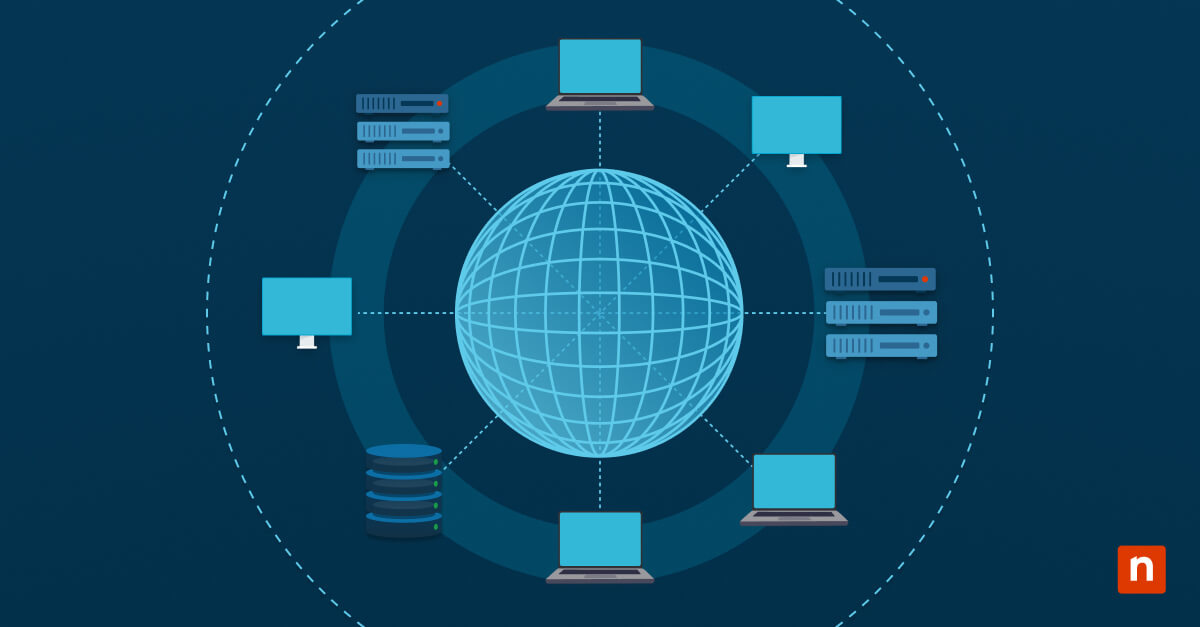Application Programming Interfaces, or APIs, are rules and protocols that allow one software application to interact with another, and can be found everywhere in today’s digital ecosystem. From the weather app on your smartphone pulling data from a remote server to provide real-time weather information, to the payment gateway service that processes your online purchases, APIs facilitate the seamless flow of data and services. They enable developers to tap into the functionality of existing applications, providing access to the services those applications provide, as well as the data behind them.
What is API management?
API management is the process of creating, documenting, publishing, securing, monitoring, and analyzing APIs in a consistent and scalable manner. It involves a number of working practices and tools that enable organizations to control and optimize the usage of their APIs, both internally and externally.
At its core, API management seeks to provide a centralized control point for managing APIs, ensuring they are secure and performant, whilst meeting the needs of both API providers and consumers.
Core components and capabilities of an API management system
API management systems typically consist of the following core components:
- API gateway: The API gateway acts as a mediator between API consumers and providers, handling tasks like request routing, security, and rate limiting. It also provides a point of presentation abstracted from the API itself.
- Developer portal: The developer portal is the interface where developers can find, understand, and access APIs. It often provides documentation, code samples, and testing tools.
- Security and authentication: API management systems implement security measures such as OAuth, API keys, and tokens to control access to APIs and protect sensitive data.
- Analytics and monitoring: API management systems offer real-time insights into API usage, performance, and potential issues, enabling proactive maintenance and rapid fault resolution.
- Rate limiting and quotas: APIs often have rate limits to prevent abuse. API management systems enforce these limits and provide quota management.
How API management systems operate
API management systems work by intercepting API requests and responses, applying policies and security measures, and routing traffic to the appropriate backend services. They also provide visibility into API usage and performance.
A simplified API management system flow is as follows:
- API request: When a client makes an API request, it first goes through the API gateway.
- Security checks: The API gateway performs security checks, including authentication and authorization.
- Rate limiting: If rate limiting is in place, the API gateway enforces it to prevent abuse.
- Request routing: The API gateway routes the request to the appropriate backend service based on the request’s URL or parameters.
- Response transformation: The API gateway may transform the response data if necessary.
- Analytics and monitoring: Data about the request is logged for analytics and monitoring purposes.
- Response: Finally, the response is sent back to the client.
Why is API management important?
As API usage has become commonplace, the need for effective API management has become greater. Effective API management encompasses a range of practices, tools, and policies that govern the entire lifecycle, including designing, building, securing, deploying, monitoring, and analyzing APIs.
Several factors, including the following, drive the importance of API management:
- Complexity: Modern applications often rely on numerous APIs, leading to increased complexity in configuration. API management helps to identify which APIs are in use, and what each provides access to, making technical complexity more comprehensible.
- Security: APIs are potential entry points for cyberattacks. Effective API management enhances API security by implementing authentication, authorization, and encryption measures to support a least-privilege approach to application and data access.
- Scalability: As the demand for digital services grows, APIs must be able to scale to meet increased traffic. API management supports scalability.
- Compliance: Regulations such as GDPR and CCPA impose strict data protection requirements. API management helps organizations comply with these regulations by tracking which APIs grant access to which data sets and which applications can make calls via those APIs.
- Developer Experience: API management tools provide developers with the documentation, testing environments, and analytics to securely and efficiently create and maintain APIs.
APIs are attractive targets for cyberattacks, as they provide potential, often far-reaching, access to sensitive data that would otherwise be unavailable. API management helps mitigate these risks by implementing robust security measures like authentication, authorization, and encryption.
Enhancing and streamlining the API lifecycle
API management operates across the entire API lifecycle, from design and development to deployment and retirement. This end-to-end approach ensures that APIs are created with a clear purpose, documented thoroughly, and remain well-maintained throughout their lifespan. It also means data access via API is properly controlled, and persistent access to data from unmanaged or largely forgotten APIs is no longer a concern.
API management streamlines the development process by providing developers with tools, documentation, and example code, reducing time-to-market and improving overall productivity. Consistency and security are also enhanced.
Bridging the gap between API providers and consumers
API management bridges those who provide APIs (API providers) and those who consume them (API consumers). It ensures that both parties have a positive experience:
- Providers: API management helps providers publish APIs efficiently with proper documentation, security, and scalability, as well as the peace of mind that comes with proper authentication, logging, and data security.
- Consumers: API consumers benefit from a developer-friendly portal with documentation, sandbox environments for testing, and support.
This bridge fosters collaboration and helps organizations leverage APIs more effectively.
Benefits of API management
Effective API management offers several benefits, including:
- Efficient API lifecycle management: API management streamlines APIs’ creation, deployment, and maintenance. It ensures that APIs are designed with best practices, documented comprehensively, and remain up-to-date.
- Consistent performance monitoring: API management tools provide real-time analytics and monitoring, allowing organizations to identify performance bottlenecks, track usage patterns, and proactively address issues.
- Secure API access and rate limiting: Security features like authentication and authorization protect APIs from unauthorized access. Rate limiting and quotas prevent abuse and ensure fair resource allocation.
Challenges addressed by API management
APIs offer many advantages to both providers and consumers, but API integrations can also be problematic. Some of the common challenges associated with API integrations include:
- Security concerns: APIs are a potentially complex and interconnected attack vector for the malicious actor to access data that would otherwise be unavailable. API management addresses security challenges by implementing security measures, including authentication, authorization, and encryption.
- Scalability: As consumption increases, API performance can degrade to the point it impacts availability. API management provides scaling options that ensure APIs can handle increasing loads, preventing service disruptions due to traffic spikes.
- Documentation and Discovery: The developer portal in API management provides comprehensive documentation, making it easier for developers to discover and use APIs and improve consistency and security.
- Versioning: API management systems support versioning, allowing backward compatibility and smooth transitions to new API versions.
- Analytics and Monitoring: API management tools provide insights into API usage, performance, and potential issues, helping organizations reactively prevent problems before they arise, respond promptly to any issues that may occur, and continuously improve their APIs.
Tools for effective API management
API management software serves as a comprehensive solution for managing APIs. These tools encompass all aspects of API management, including security, monitoring, analytics, and developer support.
API management software’s key roles include providing a centralized control point for managing API traffic, security, and routing, as well as a self-service platform where developers can discover, test, and access APIs. API management improves security by introducing measures such as authentication, authorization, and encryption, with monitoring and analytics capabilities providing real-time insights into API usage and performance.
The significance and utility of API monitoring tools
API monitoring tools focus on tracking the health and performance of APIs. They provide metrics, logs, and alerts for API endpoints, helping organizations detect and resolve issues quickly.
API monitoring tools offer the following benefits:
- Real-time visibility: API management tools provide a real-time solution to monitor API performance, identifying bottlenecks and anomalies.
- Alerts: The breaching of predefined thresholds generates alerts, allowing for proactive issue identification and resolution.
- Historical data: Retaining historical API data helps providers with trend analysis and capacity planning, ensuring performant API services going forward.
Factors to consider when choosing an API management platform or tool
Selecting the right API management platform or tool is crucial to the success of your API integrations and initiatives. When selecting an API management solution, consider the following factors:
- Scalability: Your chosen API management platform needs to be capable of handling traffic volumes today, as well as having the capacity to manage expected traffic growth.
- Security: Available security features should be sufficient for the data classifications requiring protection and include authentication, authorization, and encryption.
- Developer experience: The developer portal should provide clear documentation and testing environments and the facility for sharing code examples and fostering consistent and collaborative development.
- Analytics: Comprehensive and robust analytics and monitoring capabilities improve both API management today and API roadmaps moving forward.
- Integration: Ease of integration is essential to successfully adopting API management tools. Ensure your chosen platform integrates well with existing infrastructure and tools.
- Cost: Charging models vary between providers, with some being less transparent than others. Ensure the pricing model of your preferred API management solution fits with commercial considerations.
API management in action: Best practices
For API management to succeed, the following best practices should be adopted:
Adopt a security-first approach to APIs
Security should be the priority when managing APIs. Implement robust authentication mechanisms such as OAuth or API keys, define clear access controls and permissions for API endpoints, and ensure data transmitted via APIs is encrypted to protect sensitive information. Once configured, conduct regular security audits and penetration testing to identify and address vulnerabilities.
Ensure scalability and flexibility in API solutions
Scalability is essential to accommodate the growing demand for your services. Distribute traffic evenly across multiple servers to prevent overloads and implement caching mechanisms to reduce the load on backend services. Use auto-scaling to adjust resources based on traffic, and consider the adoption of a microservices architecture for flexibility and modularity.
Regularly review and update APIs for optimum performance
APIs are not static; they evolve. Implement versioning to avoid compromising existing client applications. Regularly test APIs for functionality, performance, and security and gather feedback from API consumers to make improvements. Keep API documentation up-to-date to reduce friction in the development lifecycle.
Engage in continuous monitoring and analytics
Monitoring and analytics are essential for maintaining a healthy API ecosystem, and continuously monitoring API performance and usage powers future enhancements. Analyze data to identify trends, user behavior, and areas for improvement and configure alerts for critical events to enable rapid response.
Future-proof your API ecosystems with smart management
API management is foundational to modern software development and digital service provision. It empowers organizations to embrace APIs to their fullest potential while optimizing security, scalability, and a seamless developer experience. By adopting best practices in API management, organizations can future-proof their API ecosystems and drive innovation in the digital age. API management is the key to unlocking the transformative power of APIs to its greatest extent, powering secure integration and communication between applications and services in today’s interconnected world.








